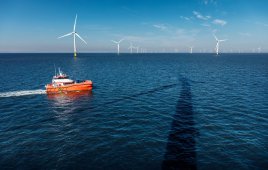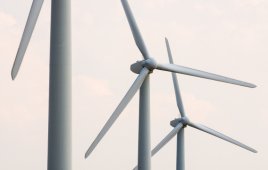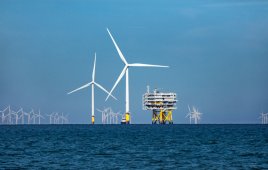Keeping the wide variety of machinery in a nacelle operating at peak performance requires a few test and measurement tools. On the mechanical side, vibration and alignment tests, are frequent tasks.
Vibration has been a knotty problem because the location and operation of wind turbines made them “immune” to international vibration standards. According to DIN ISO, condition-based maintenance for wind power plants means maintaining, visually inspecting, measuring, and analyzing the condition of the turbines and then performing required repairs. So how might one measure and evaluate vibration components of wind turbines when they have been excluded from international standards?
To increase the uptime and operation of wind turbines, the Association of German engineers, Verein Deutscher Ingenieure (VDI), in collaboration with manufacturers, helped develop the VDI 3834 vibration and evaluation standard for wind-power plants. The standard will help to close a gap between this and other well established standards for threshold values of specific components. This means vibration signals of wind power turbines are no longer a problem to measure and evaluate when using vibration analyzers that feature built-in VDI measurement standards.
Manufacturers and plant operators benefit from using the vibration threshold values of drivetrain components. Consequently, they can deal with maintaining these components in well running conditions. Proper alignment between the drivetrain and balancing of the rotor blades are important to condition monitoring on wind turbines.
At least one laser alignment device lets maintenance crews measure and align main shafts with generators for low vibration. The developer says its device works on turbines regardless of OEM or coupling. Some alignment devices come with features that ensure good measurement accuracy and mounting hardware.
The device features a continuous-sweep measurement mode which evaluates hundreds of readings during shaft rotation. This compares to shooting a movie versus a few pictures at intervals. The result is said to be less shimming and horizontal moves to correct alignment, because of more accurate measurements.
To better test and measure new drivetrain ideas, the DOE says Clemson University will receive up to $45 million for a wind energy test facility that will enhance the performance, durability, and reliability of utility-scale wind turbines. The department says this investment will support jobs and strengthen American leadership in wind energy technology by supporting the testing of next- generation wind turbine designs.
The Large Wind Turbine drivetrain Testing facility will let the U.S. expand domestically development and testing of large-scale wind turbine drivetrains. Wind turbines have increased with each new generation, and, according to the department, have outgrown the capacity of existing U.S. drivetrain testing facilities. The new testing capability is intended to improve U.S. competitiveness in wind energy technology, lower energy costs for consumers, and maintain rapid growth in the deployment of wind-energy systems.
The facility will feature power analysis equipment capable of performing highly accelerated life testing of land-based and offshore wind turbine drive systems rated at 5 to 15 MW. Dynamometer tests of drivetrains are required to show compliance with wind turbine design standards, reduce wind turbine costs, secure product financing, and reduce the technical and financial risk of deploying mass-produced wind turbine models.
Lastly, another way to get a handle on tests and measurements that would tell when a drivetrain is underperforming is with a drivetrain diagnostics simulator. It’s a small scale wind turbine drive train that generates drivetrain faults so users can learn to recognize signatures in a controlled environment. The setup lets users learn signatures of component faults such as gear surface wear, cracks, chips, and missing teeth. Sharpening the skills of student analysts with the bench-top system lets them minimize failures to gearboxes, bearings, and blade-mechanisms thereby avoiding unexpected downtime and production loss. The system also shows bearing inner and outer race defects and bearing ball damage. And it shows signatures for gear backlash, eccentricity, and misalignment.
Filed Under: O&M



